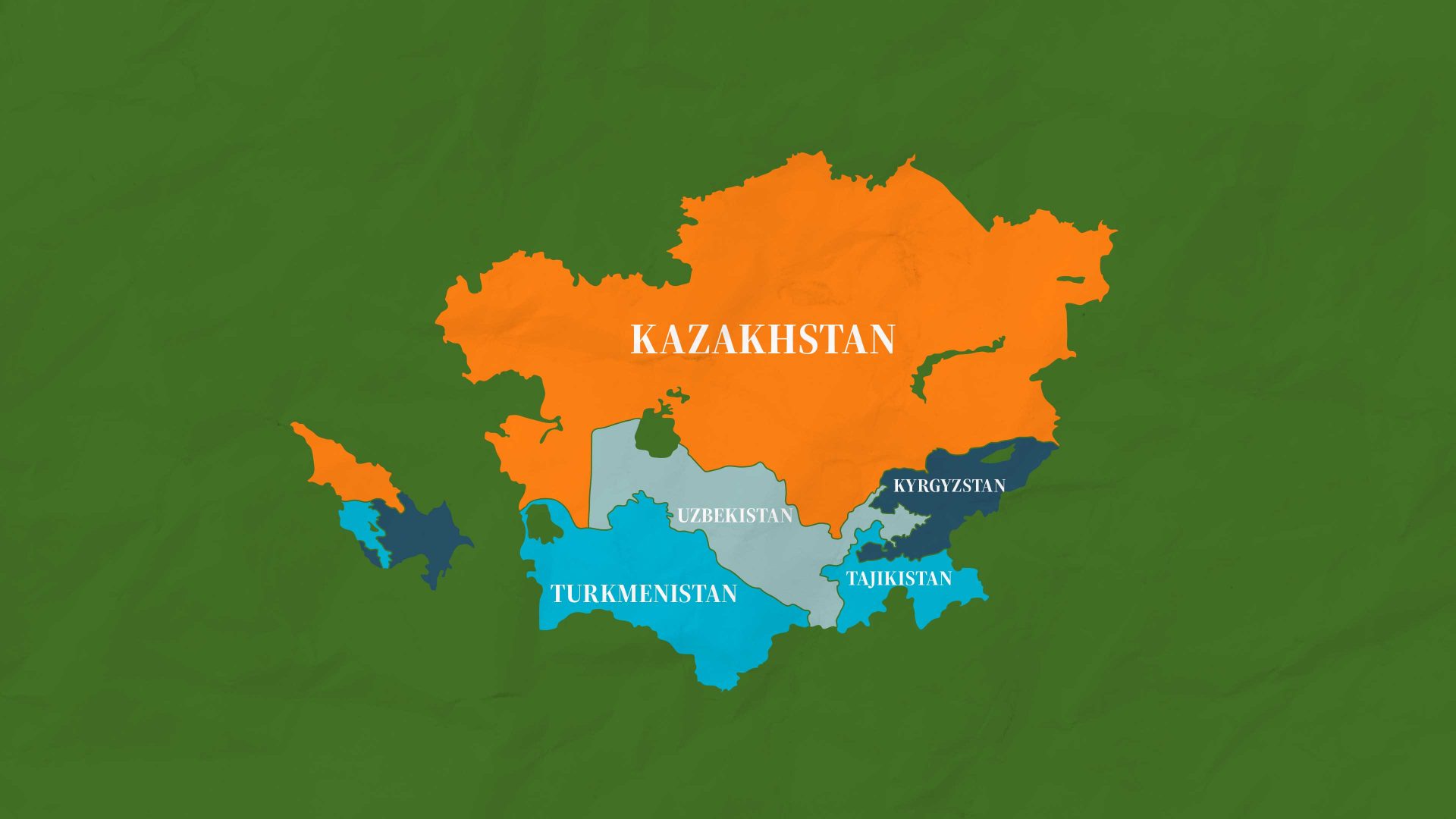It is not uncommon these days to hear or come across references to a group of polities which are sometimes known, perhaps somewhat flippantly, as “the stans”. These are the political entities with names ending in -stan which lie in Central Asia, the region of Asia that stretches from the shores of the Caspian Sea in the west over to the edge of western China in the east, and from Afghanistan and Iran in the south to Russia in the north.
Stan is a Persian-language word which signifies “where one stands”, or simply “place”. So Tajikistan means “the Tajiks’ place, the land of the Tajiks”. (The Persian language is known today as Farsi in Iran, Dari in Afghanistan, and Tajik in Tajikistan, but they are all essentially varieties of the same language).
The word stan is derived from the archaic Indo-European root sthá-, which has also come down into Modern English in forms such as stand, stay, station, and establish. In Dutch and Afrikaans, staan means “to stand”, as do Latin stare, Polish stać and Latvian stavet.
A number of these “stan” polities have the status of nation-states: Pakistan, Afghanistan, Turkmenistan, Tajikistan, Uzbekistan, Kyrgyzstan, and Kazakhstan are all members of the United Nations. Before gaining their independence, the last five of those countries were also all provinces of the Soviet Union.
There are too a number of “stans” which are not nation-states. Hindustan is the Persian word for India, but the name has also been used to refer to the entire Indian sub-continent; and Hindustani is another name for the Hindi-Urdu language. Balochistan is an Iranian-speaking area which comprises areas of Iran, Afghanistan and Pakistan. Tatarstan is one of the Russian Republics, constituting the homeland of the Turkic-speaking ethnic group the Tatars. And Uighuristan, a label not much appreciated by the Chinese government, is another name for Xinjiang, the autonomous region of north-western China which is inhabited by the Turkic-speaking Muslim Uighurs. The Uighur language is also spoken in some areas of Uzbekistan, Kazakhstan, and Kyrgyzstan.
In spite of the word stan being linguistically Persian, most “stans” are today inhabited by speakers of Turkic languages such as Uighur and Uzbek, which are classified as south-eastern Turkic languages; Kirghiz and Kazakh, which are Kipchak Turkic languages; Turkmen, which belongs to the Oghuz branch of Turkic and is also rather closely related to Turkish; and Tatar.
Central Asia was originally inhabited mostly by speakers of Eastern Iranian languages, but after the expansion of the Turkic peoples, the Iranian languages spoken there were largely replaced by Turkic languages, with the exception of Tajikistan and other areas where the Tajik language survives.
This Turkic expansion, which was eventually to reach as far west as Anatolia and neighbouring parts of the Balkans, started in the second half of the first millennium AD, when Turkic peoples gradually started moving out of their original homeland in the Altai mountains of western Mongolia. These mountains lie at the point where Russia, China, Mongolia, and Kazakhstan all converge, and they contain the headwaters of both the River Irtysh, along whose banks the city of Omsk is to be found, and the River Ob, where the major city of Novosibirsk is located.
Uyghurs
According to Amnesty International, the Uighur-speaking community of north-west China are experiencing “ruthless persecution at the hands of the Chinese authorities”. They report that approximately one million Muslim people are detained in prison camps in Xinjiang. Uighurs are under attack for being Muslim, but the government is also attempting to eradicate their language and culture, and to indoctrinate them with government-approved Chinese values.




